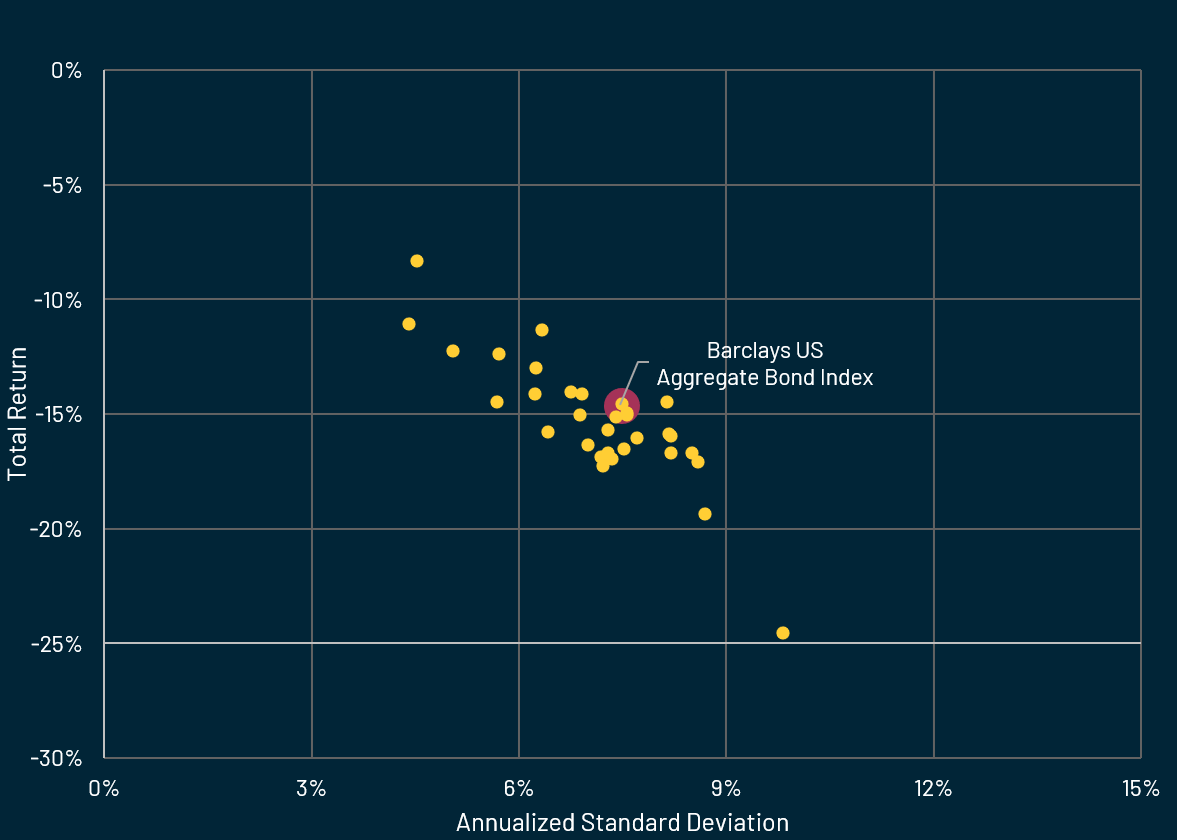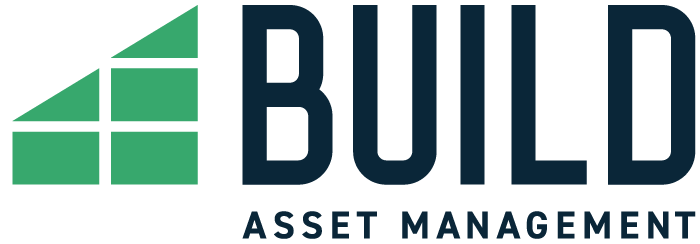“When I say these and other total return bond funds have lost their “charter”, I’m asserting that almost all of these funds have in the last five years become quasi “index funds”. And since most adhere to indices with six year and longer durations*, their performance has reflected the increase in 10 [year] Treasury yields from 1.5% to the current 3.9% level. Admittedly, even a low duration fund would have had trouble showing returns above the line this year. But -15%? These total return funds are actively managed with the ability to go low in terms of maturity duration, but they all seem to be chasing “index-plus” performance as opposed to “total return” management. Perhaps they should all change their names to “index plus” to reflect that reality.” – Bill Gross, 50 Basis Deposit / No ReturnIn his recent article, Bill Gross aptly points out that too many bond managers have lost sight of their critical role in preserving their investors’ capital, taking too passive a role in their “active” strategies. It became clear in 2022 that inflation was not transitory and that the Fed would need to act with aggressive rate hikes. Yet despite this, most active managers remained wedded to their benchmark-hugging portfolios, ignoring the clear and meaningful duration risk in their strategies presented by a Fed tightening cycle. Bond fund investors may have paid the price for this passivity. Through Sep 30, 2022, among actively managed ETFs in the Morningstar Intermediate Core Bond and Intermediate Core Plus Bond categories, the median YTD return is -15.05% (source: Bloomberg), with only one fund out of 32 eligible not experiencing at least a double-digit loss over this period. The Bloomberg US Aggregate Bond Index, the most common benchmark for ETFs in these categories, was down -14.61% over the same period. As you can see in Figure 1, the returns of most of these ETFs are clustered around the benchmark. Much of this weak fund performance can likely be attributed to rising interest rates and manager’s unwillingness to stray too far from the duration of the benchmark, despite the explicit ability to do so in many of their prospectuses. Figure 1: Actively Managed ETFs, Morningstar Intermediate Core Bond and Intermediate Core Plus Bond Categories: YTD Total Return vs. Annualized Standard Deviation

(Source: Bloomberg, data as of October 2022. Past performance is not a guarantee of future results.)
Hugging a benchmark may provide a way for managers to simplify their mandate and product positioning, but it doesn’t help the investor. Investors in these ETFs have clearly not received what they thought they were paying for in 2022, which is not just the flexibility to differentiate from the benchmark but, more importantly, the manager’s capacity to shift to a defensive positioning in the face of a perilous market. Of the actively managed ETFs in these categories, the median total expense ratio is 39 basis points (or 0.39%); an ETF tracking the benchmark index can be owned for 3 bps. If you’ve been paying active fees and getting passive results, it may be time to re-think your strategy. Build Asset Management is an active fund manager, and our goal is to use our investment mandates to seek the best possible outcomes for investors. For our flagship strategy, Build Bond Innovation, our mantra is “Defense First,” and we believe that stance has benefited our investors in a very difficult environment for bond strategies. We have been “aggressively defensive” since launching the Build Bond Innovation ETF (BFIX) in February, shortening the portfolio’s duration significantly in the first half of the year to reduce interest rate risk and also focusing on holding high quality, highly liquid investments. We understand and embrace our “charter” as an active bond manager; we are benchmark aware but certainly not benchmark huggers. Our clients hired us to be the ballast in the conservative sleeve of their portfolio and because of this we will continue to focus first and foremost on capital preservation. If you think the conservative or traditional bond portion of your portfolio may be in need of an upgrade, you might want to look at BFIX. For more information, speak to your financial advisor or visit www.bfix.fund and www.getbuilding.com.

